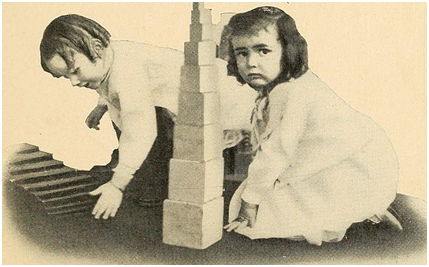Have you ever wondered how Montessori got its start? You likely know the educational model is named after its founder, but the beginnings of this approach are fascinating. Read on for a brief history of Montessori education.
Maria Montessori was born on August 31, 1870. She lived with her family in Chiaravalle, Italy, though they eventually moved to Rome. An excellent student, she decided upon graduation to apply to the University of Rome to study medicine. Just as in her younger years, Montessori was an outstanding student in medical school, even though she faced plenty of discrimination as a woman. Her chosen career was nearly unheard of for women at the time, yet she continued undeterred.
Dr. Maria Montessori is often credited with being the first female physician in Italy. There were actually other women that came before her (for example, Maria Dalle Donne was the first woman to receive a doctorate in medicine), but her achievement in this area was astounding nonetheless. After graduating she began her work in pediatric psychiatry, which is where the first seeds of Montessori education were sown.
The children in her charge were cognitively impaired; no one expected them to engage in any sort of meaningful education. During this time she became an advocate for children with disabilities, and began to develop many of the materials that would later become what we now know as Montessori materials.
In 1907 Dr. Montessori opened a child care center in a poor neighborhood in Rome. She called it Casa Dei Bambini (Children’s House) and the first Montessori school was established. The intention was for her to create a place to educate the children of poor, working parents. She began to apply what she had learned previously in her pediatric psychiatry setting, as well as using the materials she had developed there.
A highlight of Dr. Montessori’s work was her use of scientific observation. A scientist first and educator later, she looked at child development through a different lens than had many others. She noticed several surprising things:
- The children were able to focus deeply on independent work that interested them.
- The children were interested in practical life activities, such as preparing food and caring for their classroom environment.
- The children learned (seemingly absorbing information) according to what was available in the environment.
- The children responded positively to learning materials they could complete by themselves.


